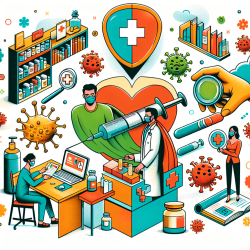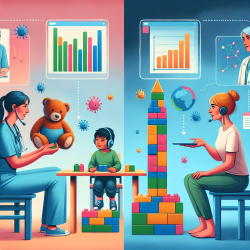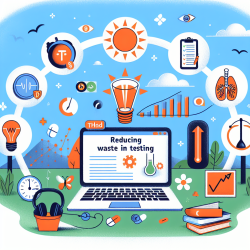The implementation of the My Abilities First (MAF) tool has been a game-changer in promoting equity and participation among children and adolescents with disabilities. A recent qualitative study titled "Implementation of the My Abilities First Tool: A qualitative study on the perceptions of professionals, caregivers, children, and adolescents with disabilities" sheds light on how this tool can be effectively integrated into practice.
According to the study, the MAF tool focuses on highlighting the abilities of individuals with disabilities rather than their limitations. This shift in perspective is crucial for fostering inclusion and participation in various settings, including health, education, and leisure. Here are some key takeaways and practical tips for practitioners looking to implement the MAF tool effectively:
Understanding the Benefits
The study found that the MAF tool serves as an educational and contributory process that enhances the inclusion and participation of children and adolescents with disabilities. Professionals, caregivers, and the children themselves reported positive outcomes, such as:
- Increased self-esteem and confidence among children and adolescents
- Improved family engagement in the therapeutic process
- Enhanced professional understanding of the child's abilities and potential
Addressing Barriers
Despite its benefits, the study also identified several barriers to the implementation of the MAF tool:
- Attitudinal barriers: Professionals and families may have preconceived notions about disabilities that need to be addressed.
- Communication barriers: Clear and effective communication strategies are essential for the tool's success.
- Social barriers: Societal attitudes and lack of awareness can hinder the tool's implementation.
To overcome these barriers, practitioners should focus on continuous education, both for themselves and the families they work with. This includes training sessions, workshops, and open discussions to foster a more inclusive environment.
Practical Tips for Implementation
Here are some practical steps to help you integrate the MAF tool into your practice:
- Start with Education: Conduct workshops and training sessions to familiarize all stakeholders with the MAF tool and its benefits.
- Use Positive Language: Focus on the abilities of the children and adolescents rather than their limitations. This can be achieved through the My Abilities ID Card, which highlights what the child can do.
- Involve Families: Encourage family members to participate in the therapeutic process. Their involvement is crucial for the child's success.
- Broaden the Scope: Implement the MAF tool not just in healthcare settings but also in schools and community centers to promote widespread inclusion.
- Monitor and Adapt: Continuously monitor the implementation process and be willing to adapt based on feedback from all stakeholders.
Conclusion
The My Abilities First tool offers a promising approach to enhancing the inclusion and participation of children and adolescents with disabilities. By focusing on abilities rather than limitations, practitioners can create a more inclusive and supportive environment. Continuous education, family involvement, and broad implementation are key to overcoming barriers and achieving successful outcomes.
To read the original research paper, please follow this link: Implementation of the My Abilities First Tool: A qualitative study on the perceptions of professionals, caregivers, children, and adolescents with disabilities.










